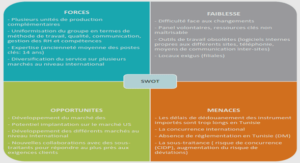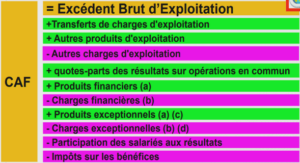On the island of Trinidad, guppies (Poecilia reticulata) can be found in abundance in the numerous freshwater streams and rivers. Due to the complex topography of the landscape, these small tropical fishes experience important gradients in environmental conditions. In particular, Trinidadian guppies live in two broad categories of local habitats, that differ markedly with respect to predation risk (Endler 1995; Gordon et al. 2009; Reznick 1997). The ’low-predation’ habitats usually correspond to small upstream portions of the water streams, above barrier waterfalls, and where mainly small, immature guppies are preyed upon by the killifish, Rivulus harti. The ’high-predation’ habitats are found in the downstream portions of the rivers and are inhabited by a diversity of stronger predators that target preferentially large, mature individuals (Endler 1978; Haskins et al. 1961). These local differences in the composition of the predator community have been maintained through time by the geographical barriers that prevent larger predators from colonizing the upstream parts. Thus, except for a few individuals that might occasionally transfer from the upper to the lower sections of the rivers, the two populations are basically kept in isolation from one another, and individual guppies will almost always encounter only one type of predation regime during their lifetime.
In addition to the criterion of predation pressure, the two populations actually differ by whole suites of physiological, morphological, demographical and behavioural traits, to the point that they are often considered as two distinct ecotypes of guppies (Sullam et al. 2015). For instance, in comparison to the high-predation populations, female guppies in the low-predation sites tend to mature at later ages, have fewer, larger offspring and invest less in reproduction relative to their body size (Gordon et al. 2009). Both males and females show more conspicuous color patterns and shorter but wider bodies (Endler 1995). Behaviourally, the courtship styles of the males include more displays and less sneaking, made at longer distance and with less intensity. Schooling is also less important and the level of agression between conspecifics is higher (Seghers et al. 1991). These are just a few examples of a long list of typical differences that have been carefully documented over the years by evolutionary ecologists (Magurran 2005) .
Thus, even though individuals from both populations actually belong to the same species, there are considerable and systematic variations with respect to a multitude of aspects of their phenotypes. Such differences seem to map with particular environmental conditions and appear in a coordinated fashion. Indeed, genetic analyses conducted on several populations of Trinidadian guppies suggest that the low-predation populations originated from indepent events of colonization of the upstream sections, from various high-predation sites (Crispo et al. 2005). Yet, although independent, these phases of expansion always co-occured with a deviation from the phenotypic distribution of the ancestral population and a stabilization on similar trait values for the various low-predation sites. Such a phenomenon has been supported by experimental evidence gathered from artificially introducing individuals from an ancestral population to new sites, with either a similar high-predation regime or a low-predation one (Gordon et al. 2009). Only ten years after the manipulation, the populations of newly introduced guppies already exhibited phenotypic distributions closer to the ecotype that matched their habitat type.
Hence, the natural history of the Trinidadian guppies raises a number of questions that are really at the heart of evolutionary ecology. For instance, why do we observe important differences between the traits express by guppies in the low vs high predation habitats? How is such variation generated? Why should independent populations colonizing new sites characterized by a low predation pressure converge on similar phenotypic distributions? And why should a variety of morphological, physiological and behavioural traits covary in a systematic fashion?
The previous case study illustrated the potential existence of substantial phenotypic variation between populations of the same species and the need to provide some evolutionary explanation for it. Yet, a quick look at the variation in life cycles across the tree of life will surely make the task of formulating any general theory appear quite daunting. Indeed, we can observe in nature both blue whales which weigh more than a hundred tonnes and measure up to 30 meters, become sexually mature after five to ten years of age, give birth to one large offspring every two to three years, and might live until eighty years; and our Trinidadian guppies, that on average will measure less than 10 centimeters, mature after 10 to 20 weeks, reproduce 2 or 3 times in a year by producing until 20 eggs each time, and might typically live two years or less. Then, how can we explain this diversity in fundamental traits such as age and size at maturity, birth rates or lifespan?
Classic life history theory is the subfield of evolutionary biology that concentrates precisely on explaining the evolution of these basic demographic traits (which are called life history traits), that, combined together determine the lifetime reproductive success of an organism (Roff 2002; Stearns 1992). It provides a unified framework to predict patterns of variation in life history traits based on the principles that, 1) limited resources available to an organism will have to be traded off between several biological functions, and 2) different ecologies will favor different allocation strategies. The first point refers to the idea that there are no ’Darwian demons’ in nature (Law 1979), that is, no organism that can maximize all components of fitness simultaneously. A unit of energy can be use either for immediate reproduction, maintenance or growth, but never for all domains at the same time. This leads to the most fundamental life history trade-off, which opposes current and future reproduction (Stearns 1992). Indeed, at an abstract level, an organism’s life cycle could be conceptualized as a succesion of allocation decisions, that choose at each point in time between a short-term option, which directly converts resources to fitness through reproduction, and a long-term option, which uses resources to increase future reproductive prospects at the cost of immediate reproduction. Then, a significant part of the variance observed in life histories should originate from the way different ecologies will affect the optimal resolution of the trade-off between current and future reproduction.
Going back to the case study of the Trinidadian guppies, the main ecological factor that distinguishes the two types of habitat is the composition of the predator community. Life history theory therefore drives us to ask in what way such differences in predation exposure might affect the trade-off between current vs future reproduction. As described in the previous section, in the low-predation sites, guppies are mainly preyed upon by a relatively small species of killifish, selectively targetting immature individuals; while in the high predation sites, larger guppies are the preferred preys of a variety of stronger predators. Thus, between the two types of habitat, the mortality rates experienced by the various age classes that structure the guppy populations will differ. In the low predation sites, juveniles suffer from high rates of predations due to the presence of the killifish but once individuals manage to reach their reproductive size, they are exposed to relatively low mortality rates. In the high predation habitats on the other hand, juveniles might be more likely to survive due to the absence of the killifish (but see Reznick et al. (1996)), whereas mortality rates for adults will tend to increase as they become exposed to more predation pressure as they grow.
Consequently, in high predation environments where adult mortality is important, investing in future reproduction will be comparatively risky due to the higher probability of dying before reaping the benefits of any long-term investment. Then, all else being equal, individuals should adopt a life history strategy that yield benefits at shorter time horizons. This predicts that higher adult mortality should bring individuals to mature at earlier ages and smaller sizes, and to invest more into reproduction during early reproductive bouts, even though this means sacrificing offspring production at later ages (Gadgil and Bossert 1970; Michod 1979).
The previous pattern captures a key part of the life history differences between the two ecotypes of guppies and is predicted by the impact of different levels of mortality rates on the trade-off between current and future reproduction. Furthermore, as described previously, the above predictions are consistent with the experimental data obtained from the artificial introduction of hundreds of guppies into various new habitats (Gordon et al. 2009). Going beyond Trinidadian guppies, the generality of the phenomenon is also supported by another experiment of artificial evolution conducted in laboratory conditions with the fruit fly, Drosophila melanogaster (Stearns 2000). During several years, tens of thousands of flies divided into distinct lines were subjected to one of two treatments. In the first treatment, which corresponded to a high mortality condition, twice a week 90% of the flies were killed by the experimenter. In the low mortality treatment on the other hand, only 10% of them were killed, twice a week as well. Densities of larvae and adults were matched for all lines, and food, temperature, humidity and light cycle were kept identical in both conditions. After four years, as predicted by the theory, flies exposed to the high mortality treatment were smaller at eclosion, grew and matured faster, invested more into reproduction early in life and had a shorter lifespan than the flies that evolved under low extrinsic mortality .
1 General introduction |




